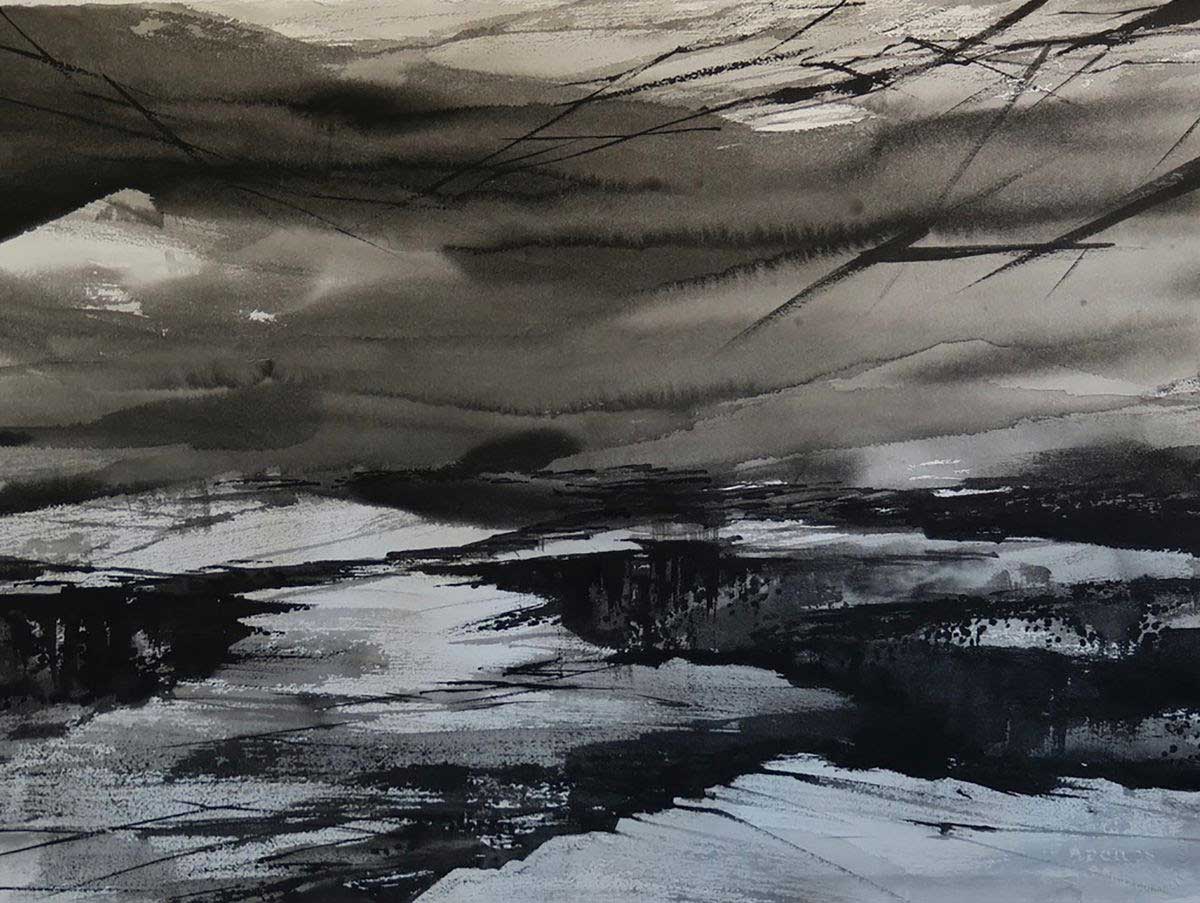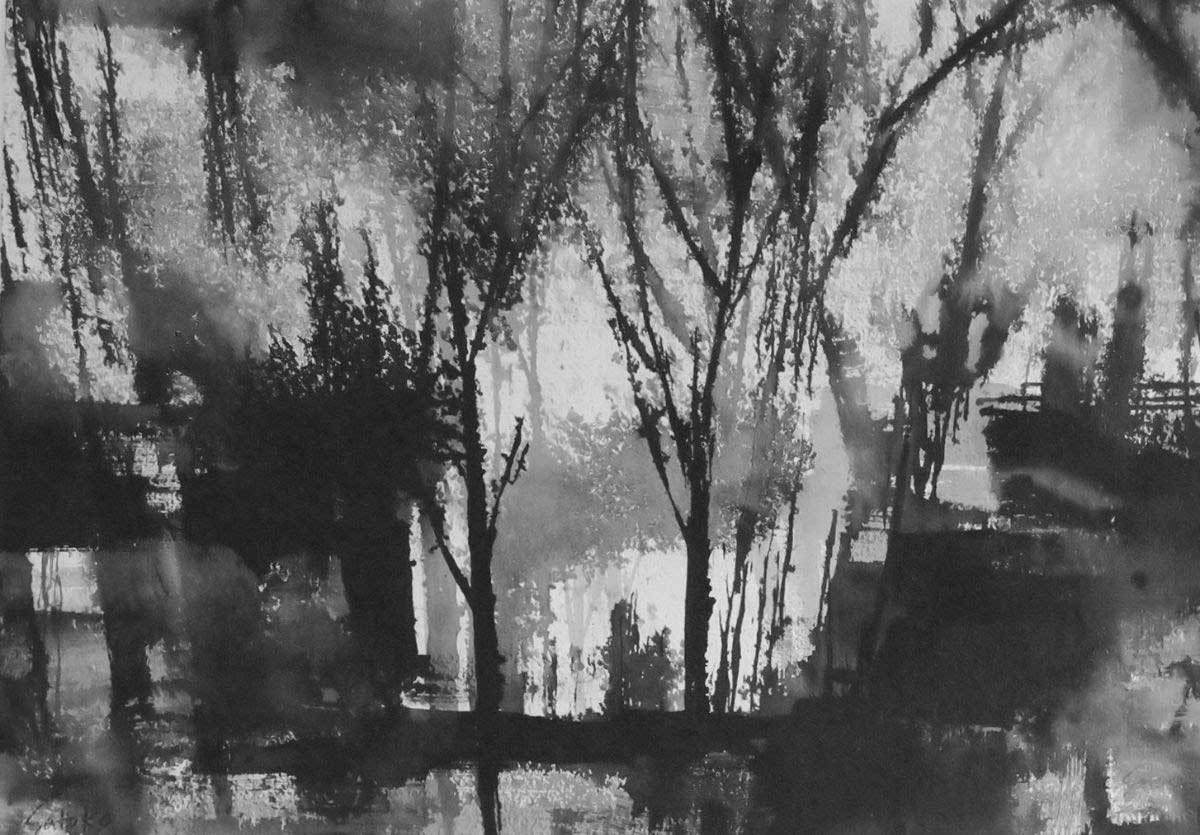Step into downtown Eugene’s White Lotus gallery most any time this month, and your first impression might be that you’re looking at an exhibit of classic black and white landscape photography from long before the days of digital cameras and inkjet printers. At a glance, the large framed pieces hanging on the wall have the smooth tonality of Ansel Adams photos of the Sierra Nevada, carefully crafted in the darkroom using the old-fashioned, very analog process of printing with an enlarger on photo-sensitive paper.
Look again. These pictures, by Eugene artist Satoko Motouji, are done the old old-fashioned way: with a brush and jet-black sumi-e ink on watercolor paper.
Over the past few years Satoko — she is one of those locals known around town by a single name, such as Frog — has turned her attention to the ravages of climate change.
“I thought, ‘How can I start expressing that in my painting?’” she says in an interview at the gallery on the late January day when the show opened. “And so my reaction was more of an emotional kind of reaction to what was happening.”
The problem was how to cram all those reactions into a single framed piece.
“How do you create contrast between beautiful nature — and then threats, right? In one painting. And I struggled and struggled for many years. But anyway, the idea was that you have a landscape, but you have some elements to disturb the landscape.”

Disturb she has. The works in the White Lotus show are manipulated far beyond the more-traditional sumi-e ink paintings Satoko has made over the years. This time around, she has put her landscape paintings on the floor and loosely splattered them with ink, Jackson Pollock style, creating bold lines of splashes that bring a sense of violence to the work. She has torn her landscapes into shreds and then reassembled them as collages. And she has even set fire to some of the works, letting the flames create new boundaries to the now-scorched images.
One example is a piece titled “Perished No. 1,” which consists of the upper half of a sheet of paper showing a mountain ridge sketched in sumi-e ink. The lower half has been burned away.
“I just lit one place, you know,” Satoko says, “and then maybe a couple of places, but I just let it go. And I took a video of that. And then that one was really interesting because at the bottom part was a forest. And this whole forest was burned. And I thought, wow, you know, this is kind of symbolic.”
The show also explores the relationship between separate works. Two separate triptychs exhibit a progression from left to right; in one, a craggy mountain ridge in the first painting disappears into a chaotic explosion of lines and paint splatters, in the second, before emerging in the third image as a smooth, perhaps restful, ridge. The three works are titled “Renewal,” “Breaking” and “Serenity.”
Born in Japan, Satoko studied art history for her bachelor’s degree at the University of Oregon and got an MFA degree at University of Massachusetts, Amherst. Now 70, she has been part of the art scene in Eugene for decades, teaching watercolor at Lane Community College until she retired there in 2016. In more recent years she’s enjoyed artist residencies at such institutions as Sitka Center for Art and Ecology on the Oregon coast and Playa Summer Lake in eastern Oregon, Ucross in Wyoming and Djerassi in California.
Though she worked for years in watercolor, she has largely switched to traditional sumi-e ink, which allows deep black washes and has a deep history in Asian art.
She has increasingly been working on collaborations with other artists, starting with a musician she met at Sitka in 2017. There she would create spontaneous images while the musician played a recorder. “Responding to music is just so much fun!” she says. “Because you don’t know what comes out.”
